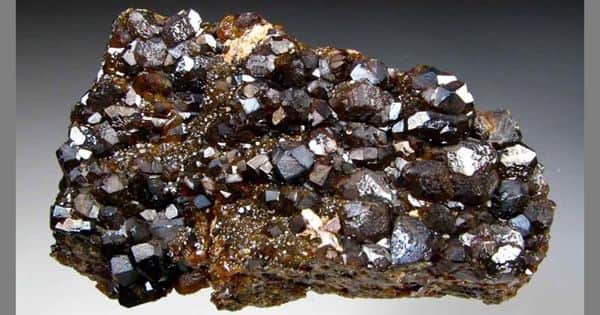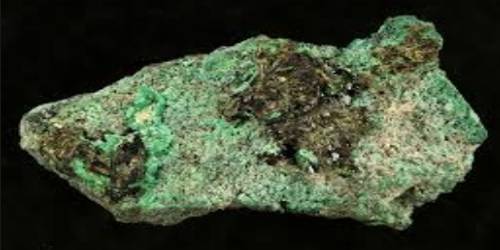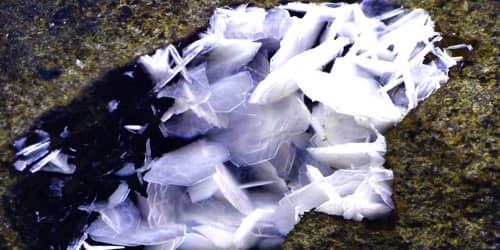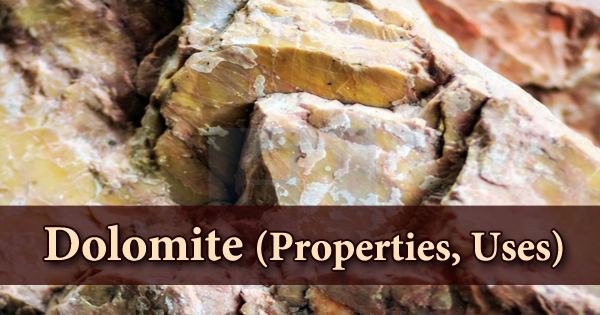Andradite is a species of the garnet group. The term Garnet describes a group name for several closely related minerals that form important gemstones, and Andradite is an individual member mineral of the Garnet group. It is a nesosilicate, with formula Ca3Fe2Si3O12. It occurs mostly in metamorphosed carbonate rocks which are known as skarns. It is a calcium-iron garnet, perhaps the most spectacular garnet because of its high dispersion, even greater than that of a diamond, and refractive index. These rocks have variable mineralogy. Grossular (another Ca-garnet) may also occur in skarns, although not as frequently as andradite.
It was first described in 1868 as an occurrence in Drammen, Buskerud, Norway. Andradite was named after the Brazilian statesman, naturalist, professor, and poet José Bonifácio de Andrada e Silva (1763–1838).
General information
- Category: Garnet group
- Formula: Ca3Fe2Si3O12.
- Crystal system: Cubic
- Crystal class: Hexoctahedral (m3m)
- Color: Yellow, greenish-yellow to emerald-green, dark green; brown, brownish red, brownish yellow; grayish-black, black; may be sectored.
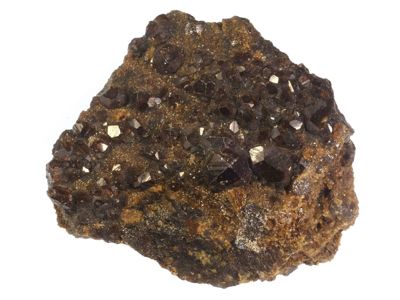
Properties
Andradite is crystals. It is chromium partly in place of iron in the crystal lattice that gives a green color to demantoid. In most cases andradite is brownish. It forms when carbonates react with magmatic fluids that carry iron.
- Crystal habit: Commonly well-crystallized dodecahedra, trapezohedra, or combinations, also granular to massive
- Cleavage: none
- Fracture: conchoidal to uneven
- Tenacity: Brittle
- Mohs scale hardness: 6.5 to 7
- Luster: Adamantine to resinous, dull
- Streak: White
- Diaphaneity: Transparent to translucent
- Specific gravity: 3.859 calculated; 3.8–3.9 measured
Andradite is a common mineral but is usually opaque and not fit for gemstone use; the transparent gemmy forms are rare and valued. Andradite includes three varieties:
- Melanite: Black in color, referred to as “titanian andradite”.
- Demantoid: Vivid green in color, one of the most valuable and rare stones in the gemological world.
- Topazolite: Yellow-green in color and sometimes of high enough quality to be cut into a faceted gemstone, it is rarer than demantoid.
Occurrence
Andradite is common and widespread, and good material can be found in Italy, Romania, Switzerland, Norway, South Africa, Russia, the United States, and Mexico. It occurs in skarns developed in contact metamorphosed impure limestones or calcic igneous rocks; in chlorite schists and serpentinites and in alkalic igneous rocks (typically titaniferous).
Associated minerals include vesuvianite, chlorite, epidote, spinel, calcite, dolomite, and magnetite.
Information Source:
